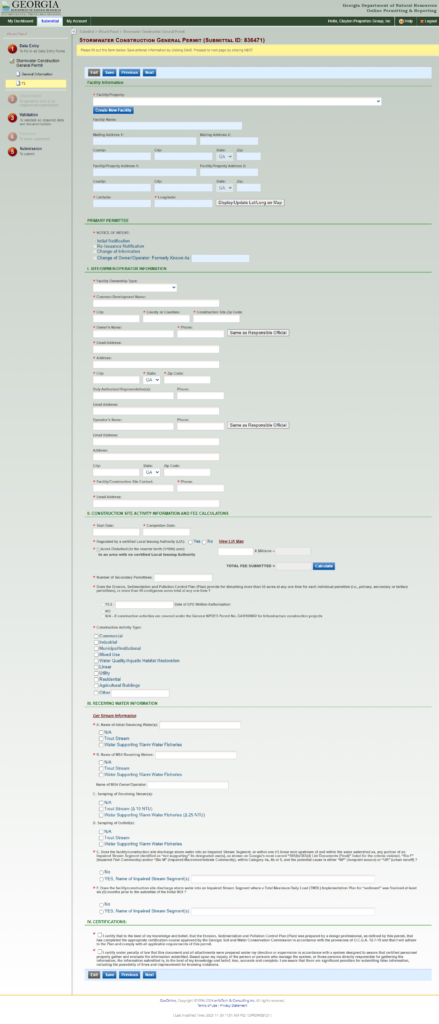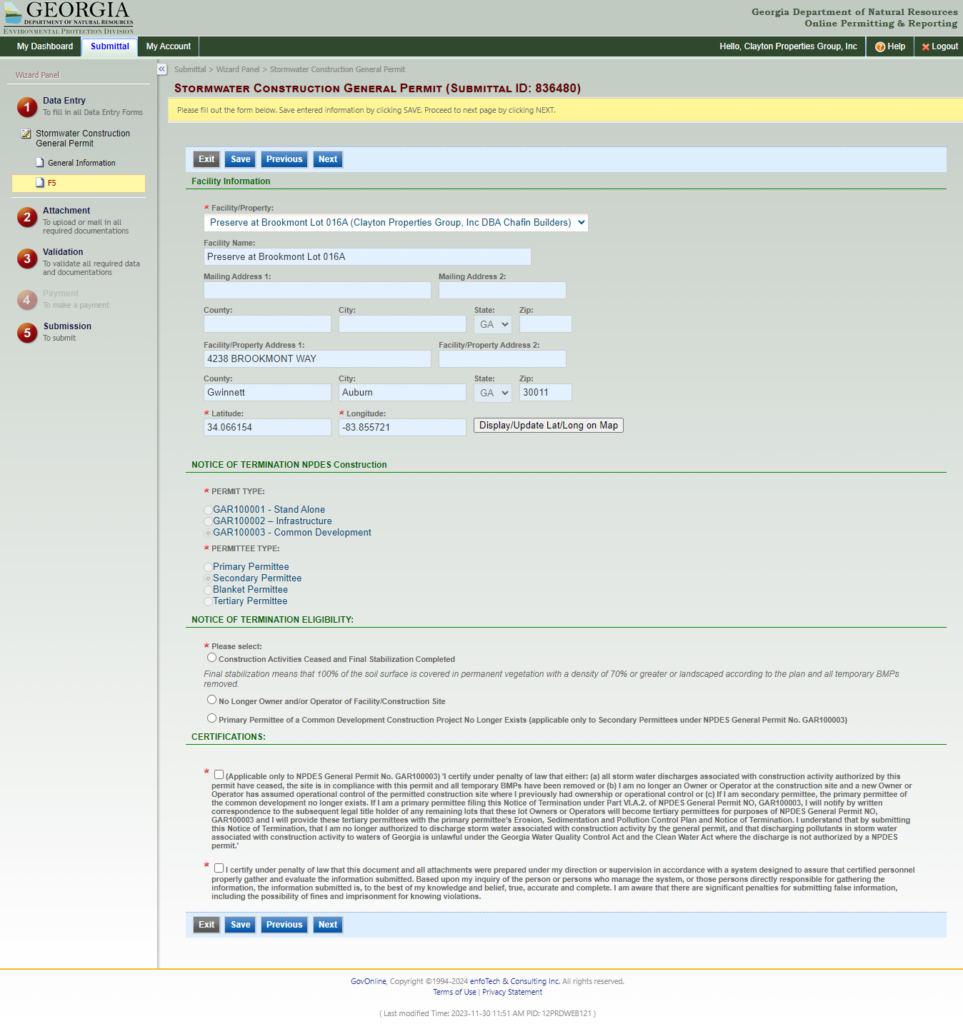Notice of Intent (NOI) and Notice of Termination (NOT) Permitting
The first question to be answered is does the work being undertaken meet the permit definition of “construction activity”, and therefore even need a permit?
Assuming the above answer is yes, in Georgia, there are three different NPDES Construction Stormwater permits, and one of those permits has three different sub-types for a total of five different permits, only one of which will be the correct one for your construction site. Each permit type has different requirements, and which permit any given project will fall under is not always clear.
GAR100001 Stand Alone Construction General Permit –
The “stand alone permit” covers projects that are not part of a common development. For example, a new school would be a stand alone project since the only thing involved is the construction of the new school. If land disturbance equal to or greater than one acre is involved, permit coverage is required.
GAR100002 Infrastructure Construction General Permit –
The “infrastructure permit” involves construction of infrastructure that is typically linear in nature. Examples would be roadways, power lines, water and sewer lines, etc. If land disturbance equal to or greater than one acre is involved, permit coverage is required.
GAR100003 Common Development Construction General Permit –
The “common development permit” is for construction projects where “a contiguous area where multiple, separate, and distinct construction activities will be taking place at different times on different schedules under one plan of development on or after August 1, 2000.” Typical examples would be residential subdivisions or large retail complexes with a large anchor store and outparcels with smaller stores, restaurants, etc.
The GAR100003 Common Development permit has three subtypes –
Primary – This is the permittee responsible for the overall development. In the example of a subdivision, this would be the main developer who performs the initial land clearing, mass grading, etc. If land disturbance equal to or greater than one acre is involved, permit coverage is required.
Secondary – This is a permittee who is working within a small part of the overall common development, and while there is still an active permittee. For example, a private individual or homebuilder buys a lot to build a house on in a subdivision that is still in the process of being developed. A permit is required for any amount of land disturbance.
Tertiary – This is a permittee who is working within a small part of the overall common development, but where there is no longer an active primary permittee. For example, the initial development of a subdivision is complete and the developer has moved onto their next project, but the remaining empty lots are gradually being sold to private individuals and homebuilders to be built on. A permit is required for any amount of land disturbance.
Fourteen days prior to beginning construction, all sites requiring NPDES Construction Stormwater permit coverage must electronically file a Notice of Intent (NOI) through the Georgia EPD Online System (GEOS) for Permitting, Compliance and Facility Information. GEOS is the one stop shop for any of the many and varied Georgia environmental permit types.
Therefore, it can be difficult and time-consuming to even determine what type of environmental permit you need, and the NOI form requires information that most people will not be familiar with nor know where to find.
Once construction activity is completed and all permit requirements like final stabilization have been achieved, the permits require that a Notice of Termination be filed using the GEOS system. While this may seem like an unnecessary bureaucratic exercise on a project that is completed, the truth is terminating permit coverage is every bit as important as gaining permit coverage. In the eyes of the law, regardless of construction activity having been completed, until a proper Notice of Termination is filed, the Permittee remains responsible for stormwater issues on that site.
Another misconception is termination of permit coverage is an all or nothing thing. No true. In certain circumstances, the permit allows for partial termination of a site. The fact of the matter is, the less acres you have under permit, the less liability you have.
Let Riverbend Environmental, Inc. save you time, money, and liability by guiding you through the complicated online Notice of Intent and Notice of Termination processes that are appropriate to your site and most beneficial to your business.


Frequently Asked Questions
If you have additional questions reach out and a team member will get in touch with you.
NPDES Construction Stormwater Permitting is a regulatory process under the National Pollutant Discharge Elimination System that requires construction sites to obtain permits for discharging stormwater. This process aims to control pollution from construction activities that disturb one acre or more of land, or in the case of lots within a common development, any amount of land.
A Notice of Intent (NOI) is a formal document filed electronically through the Georgia EPD Online System (GEOS) a minimum of 14 calendar days before beginning construction. It indicates your intention to comply with NPDES regulations and is essential for legally initiating your construction project.
If your project involves “construction activity” as defined by the permit, which typically includes clearing, grading, and excavating activities that disturb one acre or more of land, or less than one acre of land if within a common development, you will likely need an NPDES permit. Riverbend Environmental can help determine if your project falls under this definition.
In Georgia, there are three main NPDES Construction Stormwater permits, with one having three sub-types, making a total of five different permits. Each type has its own specific requirements, and the appropriate permit depends on the nature of your construction project.
A Notice of Termination (NOT) is filed upon the completion of a construction project and after meeting all permit requirements like final stabilization. It is submitted through GEOS to formally terminate your NPDES permit coverage.
Filing a NOT is crucial because, legally, the permittee remains responsible for stormwater management on the site until the permit coverage is officially terminated. Failure to file a NOT can result in continued liability for any stormwater issues.
Failure to file an NOI or NOT correctly can lead to non-compliance with NPDES regulations, resulting in potential fines, legal actions, and ongoing liability for stormwater management on the site. It’s essential to handle these filings accurately and promptly.

